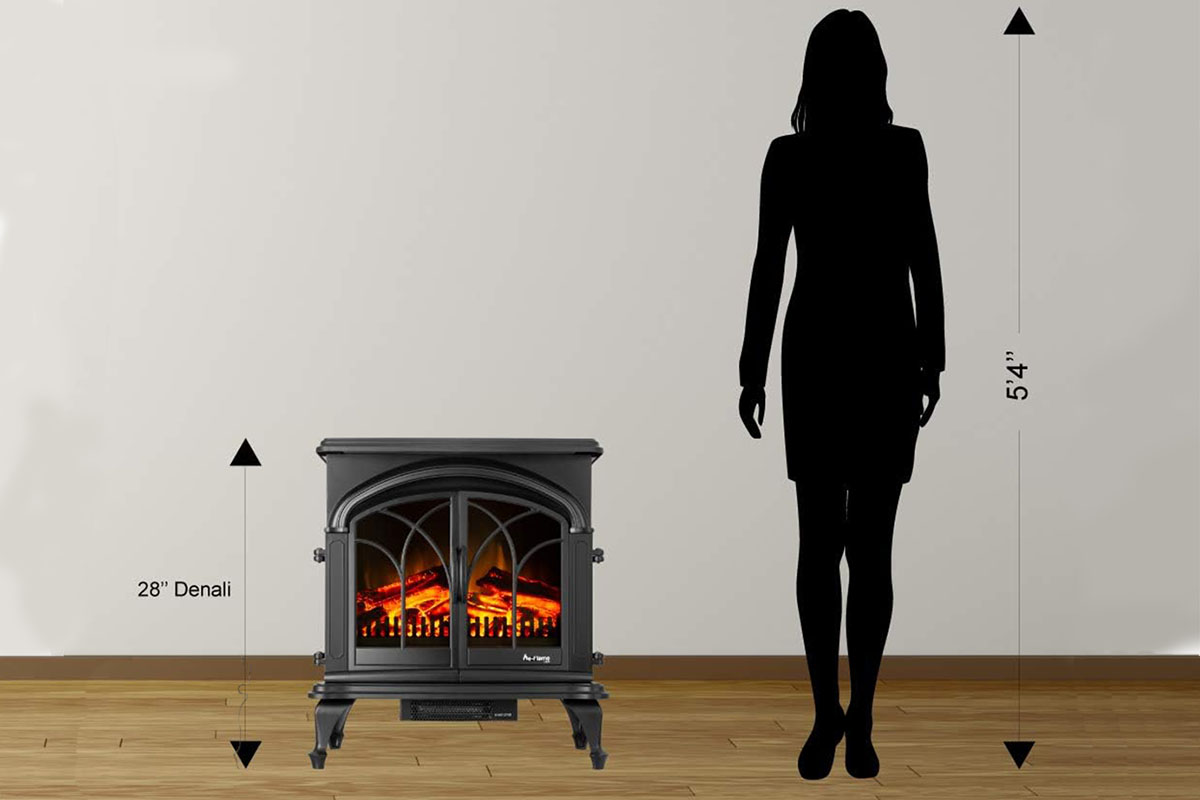A warm and inviting fireplace can become the heart of any home, creating a cozy ambiance and providing much-needed comfort during chilly evenings. However, achieving the perfect fireplace setup requires careful consideration of its dimensions.
From the size of the fireplace opening to the ideal surround and mantel dimensions, each aspect plays a vital role in ensuring both aesthetics and functionality.
In this comprehensive guide, we will delve into the world of standard fireplace dimensions, covering everything you need to know to make informed decisions about your fireplace design.
Whether you’re planning to install a wood-burning, gas, or electric fireplace, understanding the intricacies of fireplace sizing will help you create a harmonious and safe addition to your living space.
Understanding Standard Fireplace Dimensions
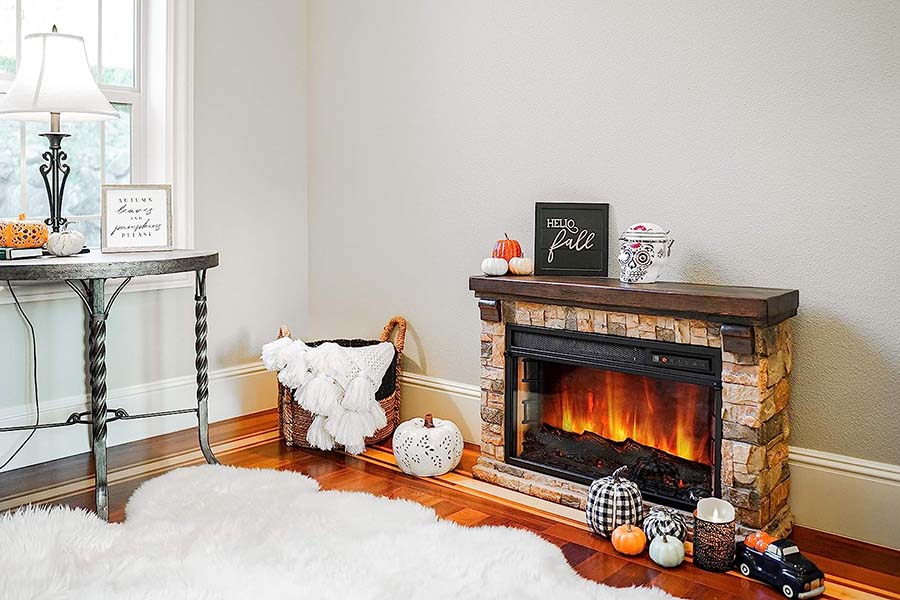
A well-proportioned fireplace not only adds to the overall beauty of your home but also optimizes its heating efficiency.
In this section, we’ll explore the significance of adhering to standard fireplace dimensions and how it impacts your living space.
The Importance of Proper Fireplace Sizing
Achieving the correct fireplace dimensions is more than just an aesthetic concern. Proper sizing is essential for maximizing the fireplace’s heating efficiency and ensuring the safety of your home.
When a fireplace is too large or too small for the garage or room it serves, it can lead to inefficient heating, excessive smoke production, and potential hazards like overheating nearby combustible materials.
By following standard fireplace dimensions, you can strike the right balance between heat output and fuel consumption.
Additionally, it will help your fireplace function optimally, providing you with warmth and comfort during the colder months without wasting energy or risking safety.
Factors Affecting Fireplace Dimensions
Several factors come into play when determining the appropriate dimensions for your fireplace. Room size and layout heavily influence the choice of fireplace size.
In larger rooms, a substantial double sided fireplace dimensions with a wide opening might create a striking focal point, while smaller rooms might benefit from a more compact and proportionate design.
Moreover, the type of fuel you plan to use also affects fireplace dimensions. Wood-burning fireplaces require a larger opening to accommodate the logs, while gas and electric fireplaces often have different ventilation requirements that influence their size and placement.
Key Considerations for Fireplace Sizing
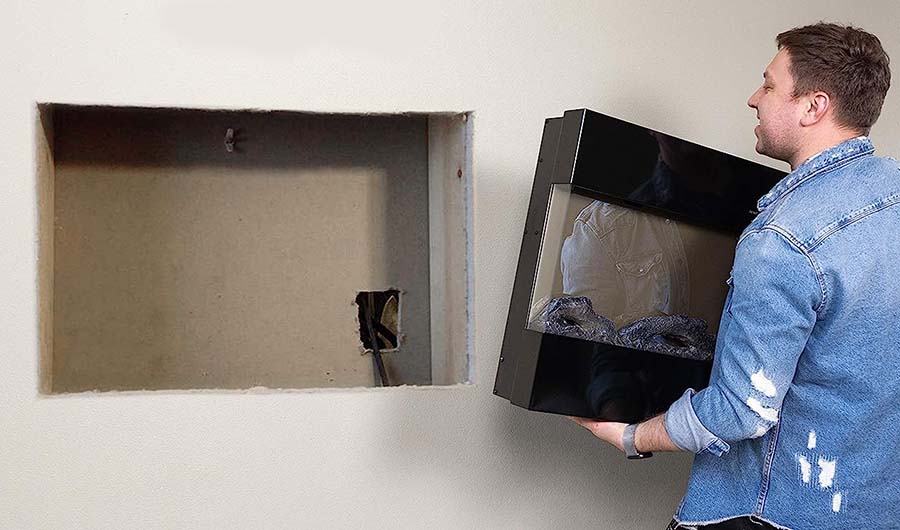
When it comes to fireplace sizing, several crucial factors need to be taken into account to ensure a well-designed and functional fireplace that enhances your living space.
From accurately measuring the available area to understanding clearance requirements, each step plays a significant role in determining the perfect fireplace fit for your home.
1. Measuring for a Perfect Fireplace Fit
Before selecting a fireplace, precise measurements of the available space are essential. Measure the width, height, and depth of the wall where the fireplace will be installed.
Account for any architectural features, such as windows or alcoves, that may influence the fireplace’s dimensions and placement.
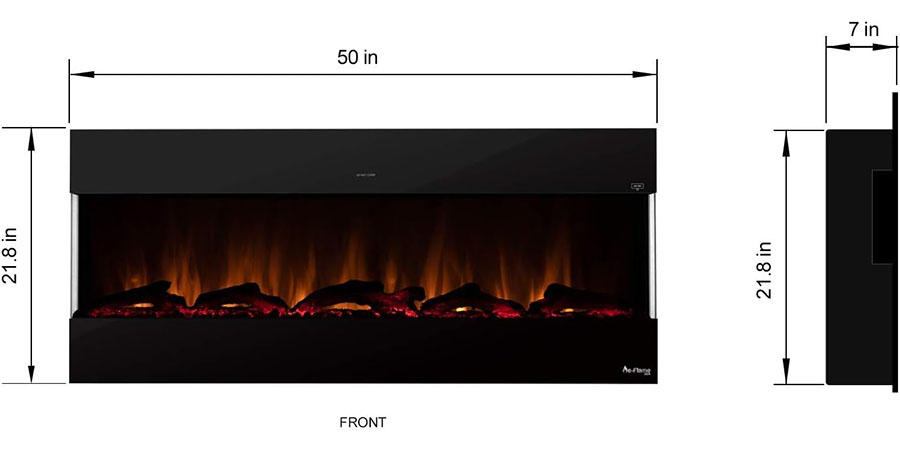
2. Clearance Requirements for Fireplace Installation
Safety is paramount when installing a fireplace, and adherence to clearance requirements is non-negotiable. These requirements dictate the minimum distance that must be maintained between the fireplace and combustible materials, such as walls, flooring, and furniture.
Each fireplace model may have specific clearance specifications that must be followed to prevent potential fire hazards and ensure proper ventilation.
Consider both vertical and horizontal clearances to provide sufficient space around the fireplace, allowing for proper airflow and minimizing the risk of overheating nearby materials.
3. Adapting Fireplace Dimensions for Room Size and Layout
One of the key considerations in fireplace sizing is adapting the modern fireplace dimensions to suit the specific size of the room and layout.
Every room is unique, and a well-designed fireplace should seamlessly integrate into its surroundings, enhancing the overall ambiance and functionality of the space.
Taking the size of the room into account is essential in determining the scale of the fireplace. In larger rooms, a grand and imposing fireplace can become a striking focal point, exuding elegance and sophistication.
However, in smaller rooms, a more modestly sized fireplace ensures that the space feels cozy and inviting without overwhelming the area.
Additionally, considering the room’s layout and architectural features ensures that the fireplace aligns with the flow and visual balance of the room, creating a harmonious and visually pleasing design.
Ideal Fireplace Dimensions for Your Home
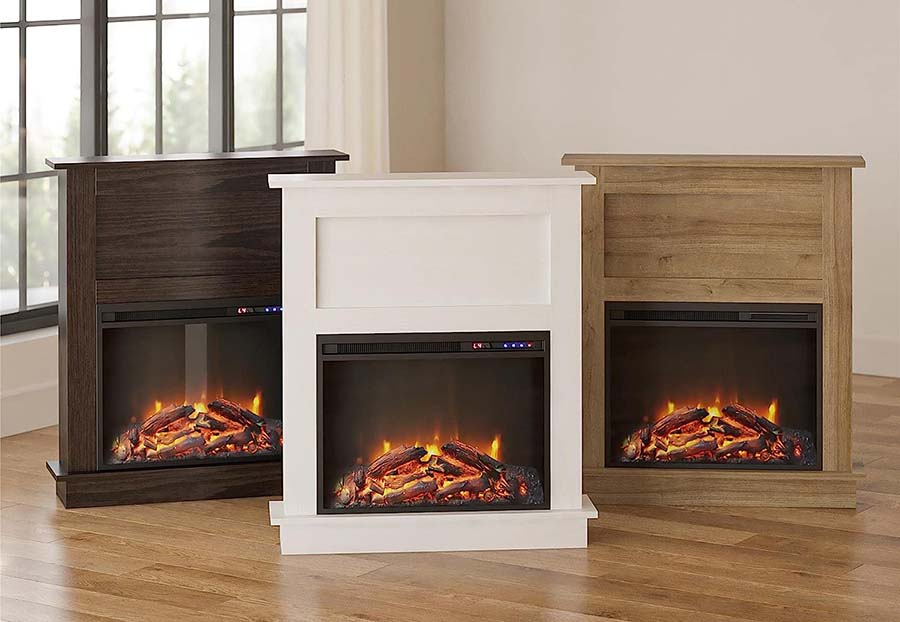
With a solid understanding of the key considerations in fireplace sizing, it’s time to explore the ideal dimensions for various components of your fireplace.
From the brick fireplace, mantle and opening to the surround, each element contributes to the overall functionality and aesthetics of your fireplace insert.
Fireplace Opening Dimensions Basics
The fireplace opening is a central feature that significantly impacts the appearance and performance of your fireplace. The size of the opening influences how much heat is radiated into the room and how efficiently the fireplace burns fuel.
The general rule of thumb is to have an opening that is about 10-15% of the total room area to ensure adequate heating. However, this can be adjusted based on your heating needs and preferences.
Additionally, consider the shape of the opening, as arched or rectangular openings can add character and style to the fireplace design.
Standard Fireplace Mantel Dimensions
The mantel is an essential decorative element that crowns your fireplace. Standard mantel heights typically range from 48 to 56 inches above the hearth. However, this can be customized depending on the proportions of the fireplace and the room.
The width of the mantel should extend several inches beyond the fireplace opening on each side for a balanced and visually appealing look.
The depth of the mantel is often determined by personal preference and can vary between 8 to 12+ inches deep, providing ample space for displaying cherished ornaments or family photos.
Fireplace Surrounds
The fireplace surround is another critical component that enhances the visual impact of your fireplace.
Surrounds can be crafted from various materials such as stone, brick, wood, or tile, each offering unique textures and styles. The height of the surround typically extends from the hearth to the bottom of the mantel.
Standard surround heights range from 12 to 16 inches, but this can be adjusted to suit the overall design of your fireplace.
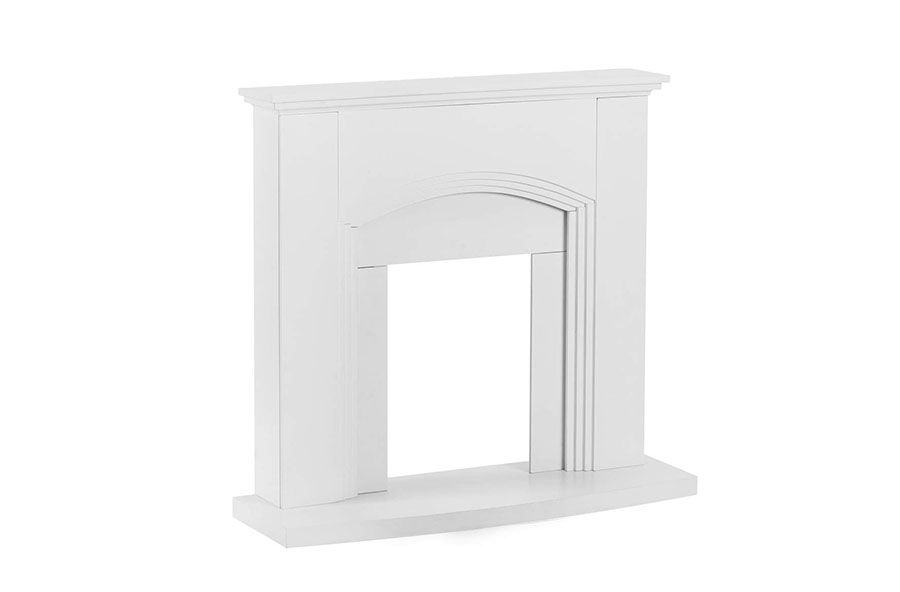
Standard Fireplace Hearth Dimensions
The hearth not only adds a layer of protection against stray embers but also provides an opportunity to showcase your style.
Standard hearths have depths of around 16 to 20 inches, providing sufficient space to display decorative elements or to sit comfortably by the fire.
The width of the hearth should extend several inches beyond the parts of a standard fireplace width, opening on each side for safety and balance.
Fireplace Dimensions for Different Fuel Types
The choice of fuel for your fireplace significantly influences the dimensions and design options available.
Whether you opt for the classic charm of a wood-burning fireplace, the convenience of a gas fireplace, or the modern elegance of an electric fireplace, each fuel type has unique requirements to consider.
Wood Burning Fireplace Dimensions
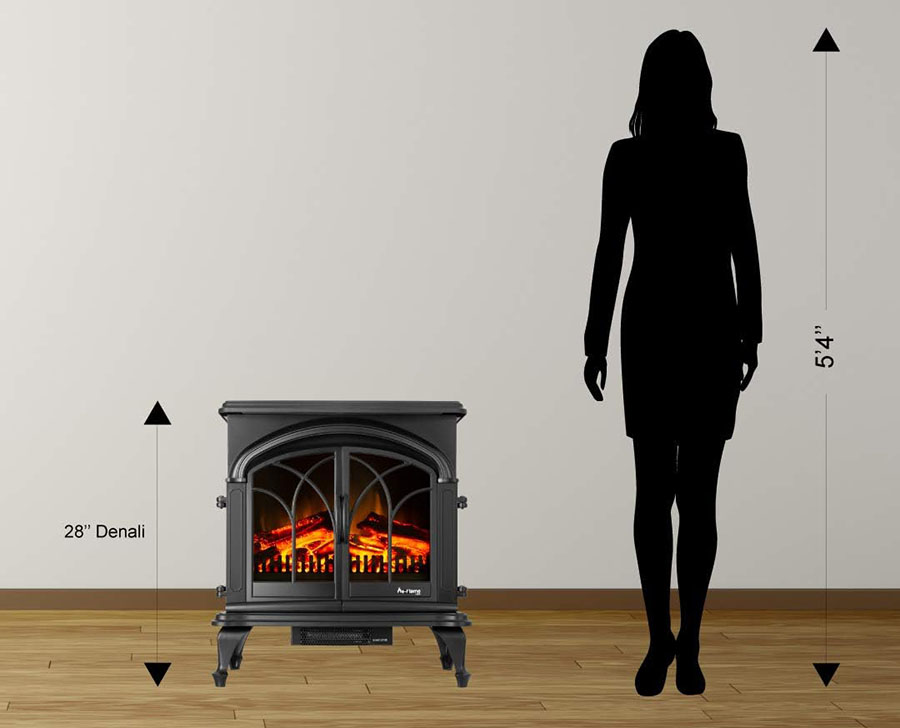
Wood burning fireplaces require larger openings and sufficient depth to accommodate logs and promote efficient air circulation.
The dimensions of the flue and chimney must be carefully planned to ensure proper draft and minimal smoke.
Additionally, the size of the hearth should be able to handle ashes and any debris from burning wood.
Gas Fireplace Dimensions
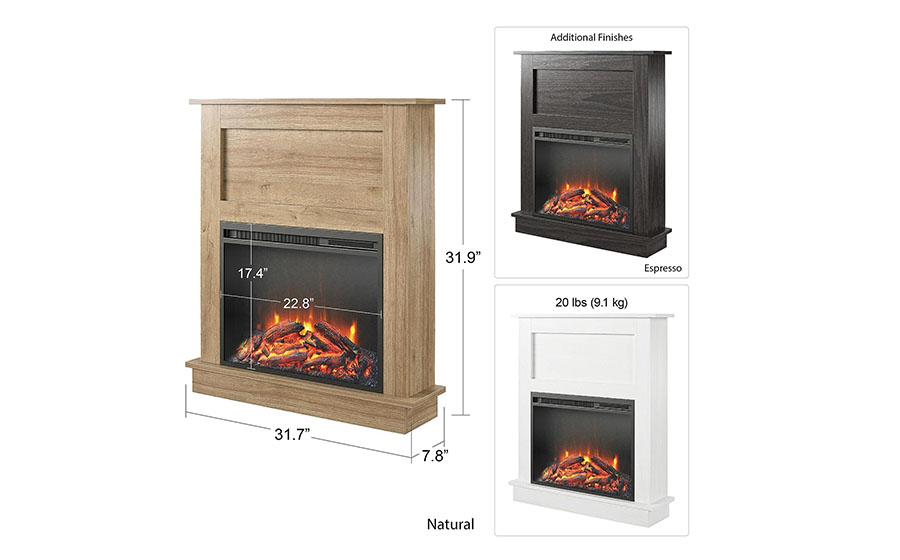
Gas fireplaces offer versatility in sizing and design due to their clean-burning nature and flexible venting options.
You can customize the fireplace opening to match your room’s aesthetics, and you can install the venting system either vertically or horizontally, providing more placement options.
Electric Fireplace Dimensions
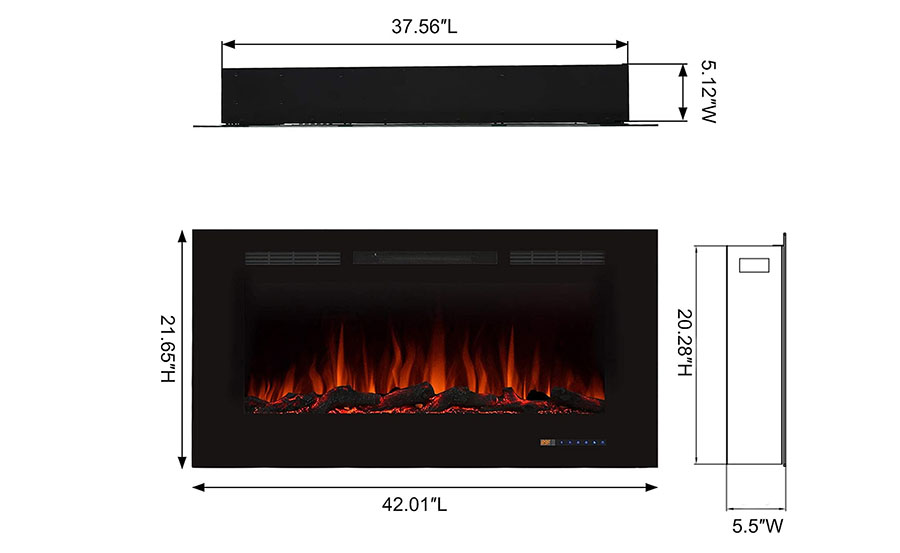
Electric fireplaces come in various shapes and sizes, ranging from wall-mounted units to freestanding stoves. The dimensions of electric fireplaces are often more flexible, making them a convenient choice for smaller spaces or apartments.
Consider the proportions of the electric fireplace to ensure it harmonizes with your room’s design and provides the desired visual impact.
Safety and Compliance in Fireplace Sizing
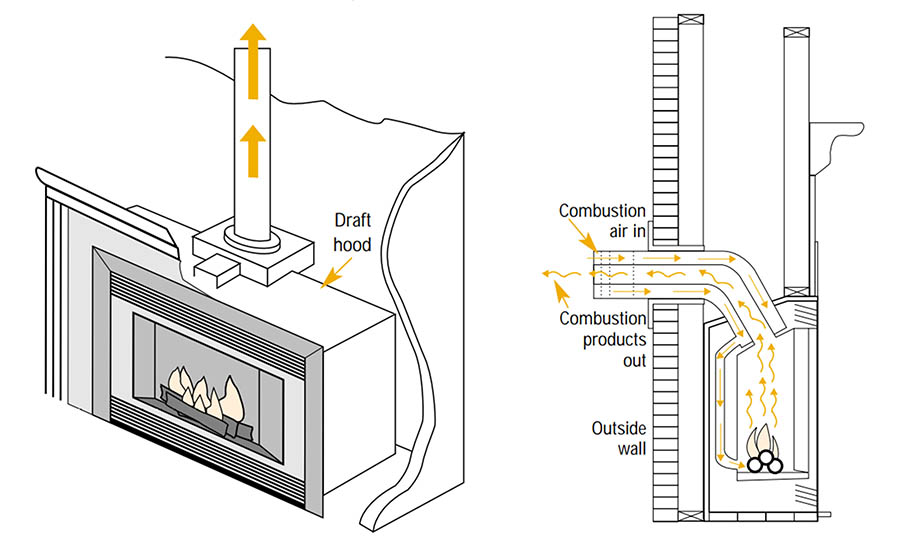
Ensuring the safety and compliance of your fireplace is crucial for a worry-free and enjoyable experience. Beyond clearance requirements, there are other essential safety aspects to consider when sizing your outdoor fireplace too.
Planning for Ventilation and Chimney Requirements
Proper ventilation is vital for efficient combustion and the safe release of combustion byproducts. Wood-burning fireplaces require a functional chimney system that draws smoke and gases away from your home.
Gas fireplaces need a well-designed venting system to ensure the safe expulsion of exhaust fumes. Electric fireplaces, being ventless, eliminate the need for a chimney or venting but should still be placed in well-ventilated areas.
Ensuring Proper Insulation and Fireproofing
Installing your fireplace with fire-resistant materials and ensuring adequate insulation prevents heat transfer to nearby combustible materials.
Fireproofing the area around the fireplace, such as the hearth and surround, adds an extra layer of protection against accidental fires.
Common Mistakes to Avoid in Fireplace Sizing
Avoiding common mistakes during fireplace sizing can save you time, money, and potential headaches.
Some common errors include oversizing or undersizing the fireplace, ignoring clearance requirements, or neglecting to consider the room’s layout.
By being mindful of these potential pitfalls, you can make informed decisions and create a fireplace that meets both your aesthetic and safety needs.
Custom vs. Standard Fireplace Dimensions
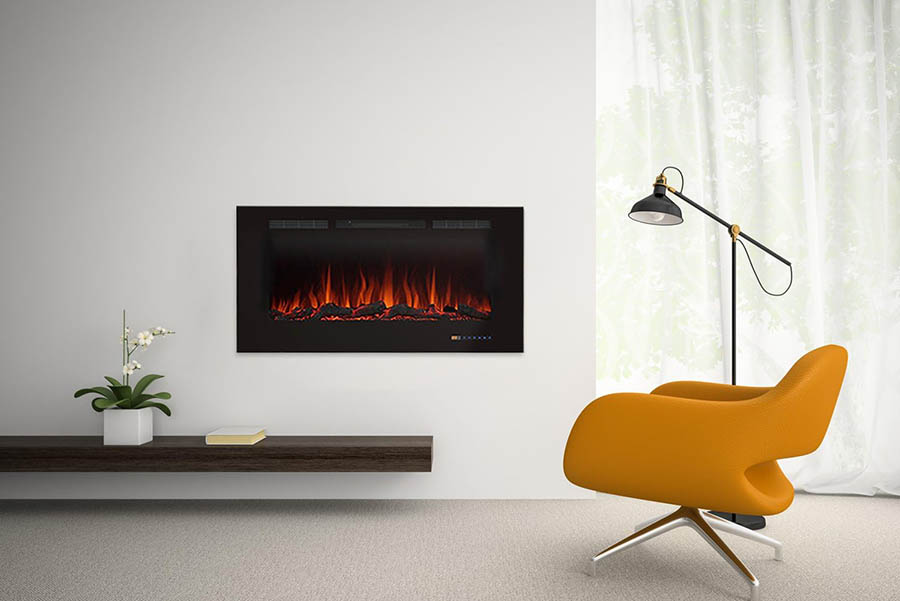
Choosing between custom and typical fireplace dimensions allows you to strike a balance between personalized design and practicality.
Future-Proofing Your Fireplace Dimensions
If you plan to remodel your home or make significant changes in the future, it’s essential to consider how much space for your new fireplace and dimensions will fit into these potential alterations. Opting for a more flexible and adaptable sizing approach can save you from costly modifications down the road.
Contemporary vs. Traditional Fireplace Dimensions
Your personal style and the overall design of your home will influence whether you opt for a contemporary or traditional fireplace. While traditional fireplaces tend to have more standardized dimensions, contemporary designs often offer more creative freedom in sizing and shapes.
Selecting the Right Fireplace Screen Size
A fireplace screen not only adds a decorative touch but also enhances safety by preventing sparks from escaping. Choose a screen that complements the size of your fireplace opening, providing adequate coverage without obstructing the view.
How to Measure Your Existing Fireplace for Upgrades
If you have an existing fireplace and are considering upgrades or modifications, precise measurements are crucial. Carefully measure the current dimensions of the fireplace opening, hearth, and surrounding elements to ensure your upgrades fit seamlessly.
Wood Burning Fireplace Warmth and Efficiency
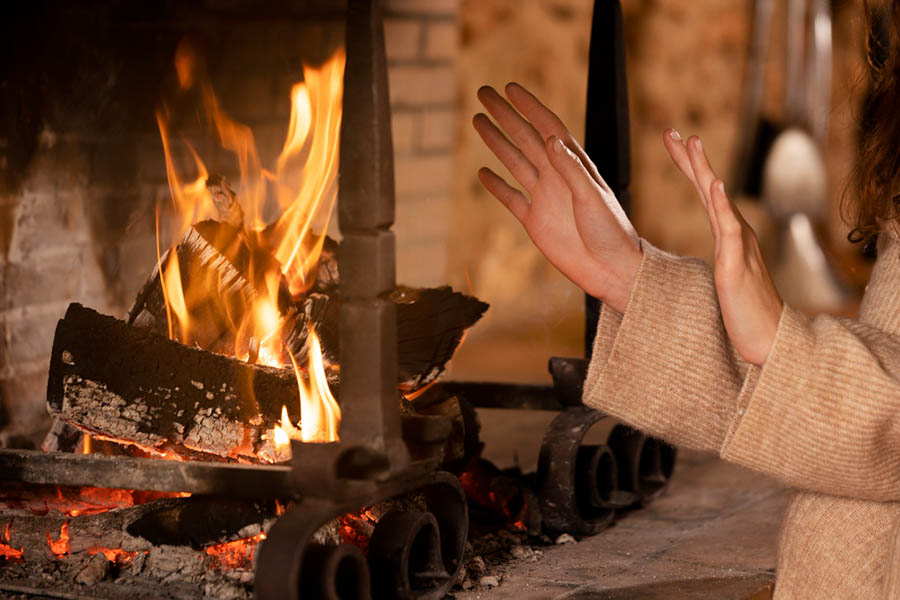
For those seeking the nostalgic crackle and comforting warmth of a wood-burning fireplace, understanding the specific dimensions and requirements is essential.
Advantages of Wood Burning Fireplaces
Wood-burning fireplaces evoke a sense of tradition and offer the authentic experience of gathering around a genuine flame. They provide outdoor fireplaces with a natural, cozy ambiance, making them a popular choice for homeowners seeking a timeless appeal.
Considerations for Installing Wood Burning Fireplaces
Wood burning fireplaces require adequate space for fuel storage, proper ventilation for combustion, and a functional chimney to expel smoke. Understanding the specific requirements will ensure your wood-burning fireplace operates safely and efficiently.
Enhancing Your Fireplace With The Perfect Surround
The fireplace surround plays a vital role in elevating the aesthetics and style of your fireplace. With various materials and designs to choose from, finding the perfect surround for your space is an exciting endeavor.
Fireplace Surround Materials and Designs
Selecting the right material for your fireplace surround refers to dramatically impact the overall look and feel of the room. Popular options include natural stone, brick, tile, wood, and even metal. Each material offers its unique charm, ensuring your fireplace complements your desired interior style.
Selecting the Right Fireplace Surround for Your Style
You can tailor the fireplace surround dimensions to suit your aesthetic preferences, whether you prefer a rustic, modern, or traditional style. Consider the color, texture, and design elements that harmonize with your room’s decor, creating a cohesive and visually stunning focal point.
Conclusion
Understanding standard fireplace sizes and dimensions is crucial for creating a safe, visually pleasing, and functional fireplace that harmonizes with your living space. Proper measurements, compliance with safety requirements, and customization ensure an ideal fit for your chosen type of fireplace.
In summary, with the right dimensions and thoughtful design, your fireplace becomes a cherished centerpiece, adding warmth and charm to your home for years to come.

